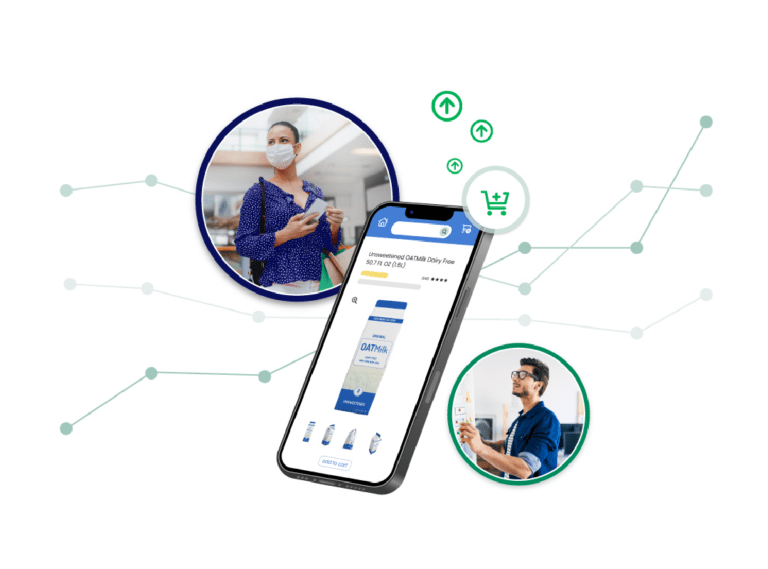Over the last few years, spurred by the pandemic, e-commerce has become standard in the retail industry. Brands with an e-commerce presence have virtually unlimited potential for success. But to take advantage of the market, brands must understand how to track, measure, and grow their e-commerce businesses.
This most recent article from 1WorldSync explores effective ways to position your e-commerce business to succeed.
Understanding Metrics vs. KPIs in E-Commerce Success Evaluation
The terms “metric” and “KPI” are often used interchangeably when discussing measures of success or goals achieved. However, to properly evaluate your e-commerce business, you must understand the difference between the two terms and how each plays into your decision-making.
Metrics are defined, quantifiable measures of your website’s success. Metrics measure processes. By focusing on specific metrics, you can zero in on essential criteria to determine the efficacy of your SEO, marketing, engagement, and sales goals.
KPIs (Key Performance Indicators) measure the performance of your metrics. They’re subjective, specific targets you try to hit.
You must understand relevant metrics and KPIs when tracking, measuring, and growing your e-commerce business. We explore these below.
Critical E-Commerce Metrics You Must Track
When it comes to e-commerce success, you must look at the data to understand if you’re surpassing goals, meeting them or falling short.
We’ve compiled a list of essential e-commerce metrics you can use to evaluate your business’s success.
1. Sales Conversion Rate
2. Average Order Value
3. Customer Lifetime Value
4. Customer Acquisition Costs
5. Cart Abandonment Rate
6. Returning Customer Rate
7. Bounce Rate
8. Customer Loyalty and Satisfaction: Net Promoter Score
9. Click-Through Rate
10. Store Sessions by Traffic Source
11. Store Sessions by Device Type
12. Store Sessions by Location
13. Top Products
14. Monthly Inventory Snapshot
15. Average Inventory Sold per Day
Keeping track of these metrics gives your business a complete picture of your performance. This data allows you to know with certainty where you’re excelling and where you’re falling short of your goals.
Evaluating your metrics regularly is essential to understand your business’s health. Monthly check-ins ensure you collect data and can measure it accurately against past months’ performances, allowing you to plan accordingly for the future.
Measuring E-Commerce Success
Keeping in theme with what we’ve reviewed regarding metrics, brands must measure their e-commerce success using hard data. Housing your performance data in a universal index allows you to summarize your performance across e-commerce channels.
A few factors will inform the metrics you choose to follow:
- Your business model
- Sales and marketing strategies
- Long-term objectives
We listed many e-commerce metrics above. And while all can be relevant in this retail channel, only some will be relevant to your unique needs. The metrics you focus on determine how you achieve them. If a particular KPI is critical to your success, you’ll need to invest more resources into achieving it.
By organizing your metrics into an index, you can determine the KPIs for those metrics and then compare them against each other. You can evaluate your e-commerce business’s success by regularly organizing and measuring your metrics and KPIs.
Growing Your E-Commerce Business with Content that Converts
The ever-expanding digital shelf provides both challenges and opportunities for e-commerce businesses. While you have limitless potential to reach customers worldwide, you must understand how to engage and sell to your shoppers most effectively.
Content drives success in the digital commerce space. Consumers rely on brands and businesses to deliver helpful, informative, and exhaustive product content to make confident purchase decisions.
When your goal is to grow your e-commerce business, you must understand and prioritize the influence of your product content, especially the content on your PDPs. Below we highlight a few ways your content shapes your success.
1. Increase Traffic
Content is the primary driver of traffic to your PDPs and website. Through content, search engines crawl and index product information for users to find on the SERPs.
When considering content strategy, brands must understand that content is the only means by which shoppers can engage with their products. Ample rich media on your PDPs allows consumers to find your products and then move toward a purchase.
Rich media that increases your traffic includes
- Detailed product descriptions and specs
- Product features
- 360-degree and 3D photography
- AR product applications, and more
The better your content, the more shoppers will engage with it. And higher engagement helps you earn better rankings on search results pages. Search engines deem pages more valuable when they’ve got high engagement and low bounce rates. Prioritizing A+ content helps you increase traffic, boost sales, and grow your e-commerce business.
2. Inspire Confidence that Translates to Sales
Bringing shoppers to your site is one thing. Persuading them to buy is another task entirely. Your product content is a primary factor determining whether a shopper will “buy now” or leave your page to browse competitor sites.
Ample product content defines a positive digital experience with brands and retailers. Your content quality, volume, and type signal to consumers your product quality. For example, a PDP that lacks product information or visuals doesn’t have the same authority as a page with enhanced media and abundant product details.
Your product content inspires consumer confidence, increasing sales for your e-commerce business.
3. Boost Customer Satisfaction and LTV
Good content does more than make the initial sale. It boosts customer satisfaction and keeps them returning for future purchases, increasing their customer lifetime value.
Remember that your content serves all customers, even those who have been buying from you for years. Every interaction with your brand is an opportunity to strengthen their loyalties to your products and business. You further endear customers to your brand when your PDPs deliver an exceptional experience through rich product content.
In addition to increasing customer satisfaction, your content can boost your average order value. Cross-selling through AR-enabled hot spots or product bundling features allows retailers to increase a customer’s average cart size by suggesting relevant products based on the items they have in their carts.
However, brands must ensure they’re recommending products consumers want to see. According to research from 1WorldSync, one in five shoppers will leave a PDP that serves irrelevant or inaccurate recommendations or product bundles.
But when done right, recommendations can significantly improve the consumer experience. Seventy-three percent of online shoppers who take advantage of recommendations say they’re moderately or very satisfied with the feature.
4. Reduce Returns
Lowering return rates is an essential yet often overlooked aspect of growing an e-commerce business.
Returns are a logistical and financial hassle for e-commerce businesses. Unfortunately, the practice of bracketing –– buying the same item in multiple colors or sizes, sometimes from competing brands –– is rampant among online shoppers. A 2022 survey found that 63 percent of e-commerce shoppers reported bracketing.
E-commerce businesses shouldn’t assume their return rates will ever hit zero. But through quality product content, companies can significantly reduce their return rates, preserving the resources wasted in the product return process.
2022 1WorldSync research found that 55 percent of shoppers have returned or received a refund for an online purchase in the last 18 months. Fifty-nine percent said inaccurate, misleading, or poor product information on the e-commerce website was the cause of the return.
By implementing rich, enhanced media on your PDPs, you provide shoppers with the information they need to make an informed purchase decision, ensuring no surprises when they open their package. The best content does more than engage –– it informs. Delivering ample product content that proactively addresses concerns and answers common questions allows brands to reduce return rates while increasing customer satisfaction.
Consistent, Accurate Product Content Wherever You Sell
As your e-commerce business grows, you’ll list your products across multiple retailer sites. When you do, you need product data tools that allow you to update your content seamlessly and instantly.
1WorldSync’s tools allow for content syndication that publishes your content in near real-time. Reduce errors, ensure content accuracy, save time, and grow your e-commerce business with effective content publishing resources.
The Right Tools for E-Commerce Success
The e-commerce landscape is constantly evolving. You need the right tools and resources to ensure you’re making the most of your online presence. 1WorldSync provides the solutions you need to win the digital shelf and sell more through your e-commerce business.
Contact our team today to learn how 1WorldSync can empower you to succeed.





